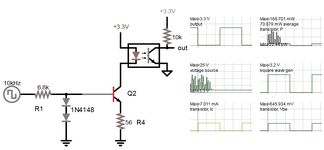Spoerle
Junior Member level 2

I am thinking about how to switch the LED in the optocoupler so that the control voltage can be 3 to 30V.The switching itself is realized by the low side transistor, the point is that the current is the same at all voltages (actually 3,3, 5,12 or 24V).
You will advise a solution with a minimum of component?
You will advise a solution with a minimum of component?


